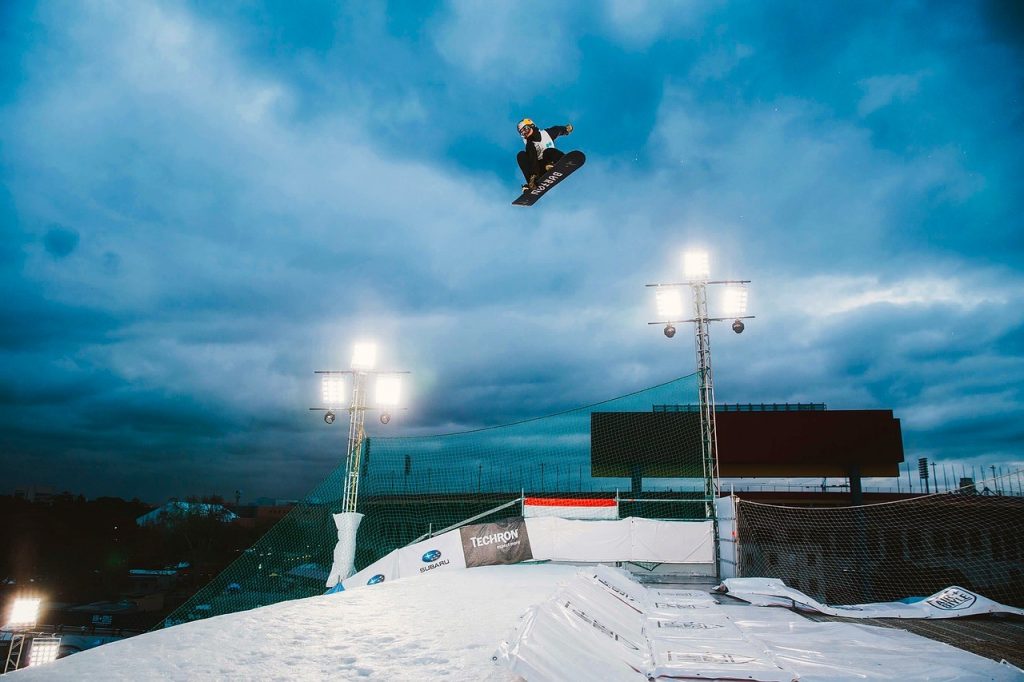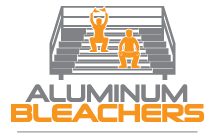South Korea Builds Up Stadiums, Bleachers, Skis Slopes and Skating Rinks for 2018 Olympics

South Korea is in full preparation mode for the Winter Olympics as they add more venues, bleachers, housing, shops and restaurants.
By Gerald Dlubala
Ski jumpers fly through the air, aluminum bleachers fill with spectators and ice skaters glide through their routines.
Competitions have already begun using the venues built for the 2018 Winter Olympics in PyeongChang, South Korea and spectators are already flocking to the aluminum bleachers in anticipation of the big event.
The Four Continents Figure Skating Championship is one of several, pre-Olympic events being held as test activities for the new and updated venues that will be home for up to 6,000 athletes from nearly 100 nations come February 9th of 2018.
The Ski Jumping World Cup is also being held there, as well as luge and biathlete competitions, all with a purpose of testing the sports facilities so that they will run smoothly come next February.
Fifteen different winter sports will be featured in these Olympic Games, followed by the Winter Paralympic Games the following March.
This massive construction project hasn’t been easy for South Korea, being the smallest country to host the Winter Olympics since Lillehammer in 1994.
But all 13 venues to be used, six of them new construction, are already completed or are on schedule for their world debut.
With a price tag of $12.4 billion, there are new venues, roads, bleachers, restaurants, retail shops and even a new high-speed rail system in store for the athletes and visitors to enjoy. These 13 venues will all be contained within two main venues, the mountain resort of Alpensia, and the coastal city of Gangneung.
Bleachers, Venues and Arenas Don’t Need To Be Flashy
Front and center in all of this development is the PyeongChang Olympic Stadium, which will be the stadium to be for the opening, closing and medal ceremonies.
Occupying an 860,000 square foot site in Hoenggye, it is built with 50,000 available bleacher seats with backs, symmetrically bending around a pentagon shaped venue.

Fans sitting in the aluminum bleachers will soon witness snowboarders like this shredding the tubes at the Winter Olympics in South Korea.
The stadium houses one underground level, and seven levels above ground. The exterior panels have the ability to be artfully illuminated with LED lights.
Next door to the stadium, there is an Olympic exhibition hall, containing various attractions along with traditional food markets.
The PyeongChang Olympic Stadium has been described as a rustic and utilitarian venue, not too flashy but more still more than adequate to serve its purpose.
This was planned deliberately, because this particular building is being built specifically for the 2018 Winter Olympics, and will be completely dismantled after the games.
That’s right. It’s a temporary, 50,000-seat stadium, (60,000 capacity with standing room included), to be used solely for the opening, closing, and accompanying medal ceremonies.
The exhibition hall next door will remain, to be used as a Heritage facility after the games.
Venues Are Built For The Present, With An Eye On The Future
The remaining venues will remain with the hopes that the athletes will visit and compete and the bleachers will be filled, fueled by the potential for a renewed interest from the Korean people in quality winter sports.
To gain this renewed interest, “They need popular South Korean athletes”, says Jung Moon-hyun, sports science professor at Chungnam National University in South Korea. “But many people don’t know any local athletes at the moment, so they won’t go.”
He’s referring to the 2014 retirement of Olympic figure skating champion Yuna Kim, who ended her career with the distinction of never finishing a competition without being on the podium for a medal.
To date, there are no local athletes ready to step up and take over those reigns to kick start the winter sports industry in Korea.
Because of this, it’s hoped that the winter games themselves will turn the region into an Asian hub for winter sports activities.
These venues, combined with updated and improved roads, should help South Korea regain their lost recognition as a major player in winter sports venues. The new high speed rail system should also help, linking Incheon International Airport, the main gateway to South Korea, with PyeongChang by a simple 60 – 90 minute train ride.
You Don’t Have To Be An Olympic Host To Benefit From New Venues
South Korea is looking forward to showing the world that they are a great host for the Olympic games. But they are also looking toward the future, using the benefits of having constructed these new venues as a springboard.
Similar benefits can also be realized on a lesser scale for smaller cities and communities that decide to pursue the building of a new sports venue, stadium, or community park or gathering place.
• Building, Construction, and Accessory Employment. New buildings projects mean new construction begins, adding jobs and dollars for the local economy. And it’s not just for the actual venue or building that will be constructed. You’re going to need all the things that go along with a new venue, including bleacher seating for sports and on-field events, parking areas, and possibly concessions and improved roads. For more community related, gathering areas like parks or recreation areas, you will need family seating areas, picnic tables, benches, and maybe a barbecue grilling area or two.
• Community Pride. New projects build pride in the affected community. That pride is magnified if the project is tied to local sports like high school football, which fosters a greater community spirit, especially in cities with populations under 100,000, which statistically and consistently produce the most pro-level athletes. There are increased rates of sports participation, with an increased chance that the coaches remain there year after year, building stability and earning the trust from players and residents alike.
• Economic and Tourism Benefits. As the venue brings in more people, the community gains a chance to showcase itself, displaying the talents, qualities and characteristics that make it a worthwhile, unique and valuable place to be. When done successfully, tourists and visitors can be expected to come back to the area and fill those aluminum bleachers on a regular basis.
• Community Sustainability. With the new venue, stadium, or park getting more recognition, it will become a draw for similar, future events. This cycle becomes recurring, allowing the venue become self-sustaining and a source of great involvement and participation.
There are countless examples of how smaller towns and communities have used new sports venues or green spaces to reap the benefits that they bring with them.
A new community or school stadium creates jobs for the local contractors.
It’s lined with quality aluminum bleachers and outfitted with concession stands, drawing local and traveling teams, along with their families, into town for the regular season games or weekly and seasonal tournaments, providing an immediate uptick in community awareness and the local economy.
A park or green space is planned and constructed, offering a gathering space for people, complete with picnic tables, benches, and a barbecue grill or two.
Consequently, there are more people getting out, using the venue, enjoying their community and building a sense of pride and togetherness. It becomes the go-to meeting place for all of the community’s events, and turns into something of a community landmark.
Just as those negotiations, promises and plans for new and updated venues make it possible for South Korea to host and benefit from the 2018 Winter Olympics, so too can a city, community or neighborhood benefit from the planning, building and use of smaller, locally based stadium projects.
Upgrading or expanding stadiums by adding more playing fields, aluminum bleachers, parking or food stands can be a magnet for more organized league activities, regional tournaments and even use by more local rec center teams.



